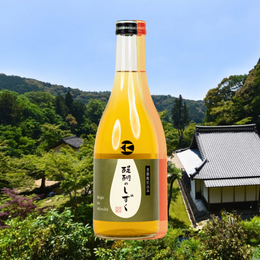
Alright, if there's one thing we thought couldn't be uprooted and transplanted, it's Japanese sake. After all, in its homeland, the rice wine we all know and love isn't even called "sake" – it's nihonshu, or "Japanese wine." But in recent years, a wave of audacious young brewers has taken the industry by storm, their youthful energy reminiscent of the American craft beer scene. They're pushing the boundaries of tradition, experimenting with everything from French terroir (thanks to the efforts of Wakaze Sake in Paris) to Vietnamese rice (check out Mùa Sake).

The global sake landscape is evolving, and Singapore has joined the ranks of innovative sake producers. It all began with one evening in Tokyo, when Singaporean sake educator Ruben Oh crossed paths with Hosoi Yosuke, a co-founder of Konohanao Brewery – the pioneer in the burgeoning doburoku and craft sake movement in Tokyo. As the night went on, fuelled by copious amounts of nihonshu, they discovered an uncanny coincidence: they were both born in Singapore, and in fact from the same hospital. This chance encounter sparked a friendship, and a shared passion for sake eventually led them to co-found Singapore's very first craft sake brewery, Orchid Craftworks.


Orchid Craftworks draws on the expertise of Konohanao Brewery, with founding brewers hailing from that esteemed Tokyo institution. Among them are Italy-born Giulia Maglio, a sake sommelier with a discerning palate, and Kimura Yuzuki, whose background in brewing sciences and research on sake yeast makes her an invaluable asset as Orchid Craftworks' senior brewer.
I really appreciate the brewery's high level of transparency about their production process too – it not only makes for a fascinating story but also builds trust with serious consumers.
The brewery is located in Singapore's western food production district and uses imported Malaysian water (rather than Singapore's reclaimed NEWater). Rice is sourced from a combination of Japanese sake rice and other Southeast Asian rice varieties.

While their koji is made in-house using steamed Japanese rice, they're actively researching the use of local Southeast Asian rice for koji production. As for yeast, they rely on cultured strains from the Japanese Brewing Association, eschewing any airborne yeast – probably a sensible decision considering Singapore’s humidity.

Jurong Food Hub (Source: Wong Ti)
Orchid Craftworks aims to create sakes that resonate with Singaporean and Southeast Asian tastes, experimenting with flavours like Cempadak Cream Sake and Durian Cream Sake - intriguing nods to local flavours.

But perhaps the most attention, given their connection to Konohanano's innovative doburoku heritage , falls on their "Utama the 1st" Cream Sake doburoku. Of course, this is authentic doburoku and contains no dairy cream. Instead, it's made in the traditional doburoku style with water, rice, koji, and yeast, and is unfiltered, resulting in a cloudy, creamy, textured beverage.

And that, dear reader, is the sake we're about to delve into.
Orchid Craftworks uTama The 1st, Cream Sake Doburoku – Review

Appearance: Cloudy with sediments.
Nose: Rich and creamy, with a gentle sweetness. Clotted cream mingles with light notes of poached pear, Kyoho grape, and lychee, followed by a prominent yeastiness and a gentle ethanol zing. Some depths of a creamy, yoghurt-like lactic acid aroma which adds more depth to the straightforward aroma.
Palate: Rich and complex. It opens a little less sweet than the nose suggests, unfolding with a layered interplay of cream, menthol, and a makgeolli chalky milkiness. Soft flavours of poached pear and banana split intertwine with a subtle carbonation and hints of lemon zest. There’s also a growing alcoholic robustness that emerges alongside a lingering, gradually building karakuchi dryness. The texture remains chalky throughout.
Finish: Fairly short, with a touch of barley and a lingering chalky sensation in the mouth, then concludes with a whisper of spiced cinnamon latte.

My Thoughts:
I wanted to say this is a “classic” but I wasn’t there when the first primordial sake was made in a Shinto temple at 0 BC. But this is clearly a high quality and thoroughly enjoyable doburoku with a creamy depth of flavour that would receive wide appeal. It has an interesting refreshing, almost minty, alcoholic robustness balances the fruitiness without becoming overly sweet.
Unlike its siblings from Konohanano, it also avoids those challenging funky notes that may excite hardcore enthusiasts but put off 50% of drinkers. It’s this dessert-like character and approachability that makes it a crowd-pleaser. While I enjoy being bamboozled by unusual flavours when trying new drinks, this refreshing take on doburoku is undoubtedly a winner for many and would be a lot more realistic as a drink you keep returning to.
My Rating: 7/10
|
Score/Rating Scale :
|

@CharsiuCharlie







